Looking for the best travel cameras? In this review I will walk you through our top picks! You see, photography is a huge part of travel for many people. We all want to capture memories as beautiful as the moments we experience.
However, choosing which travel camera to buy is like navigating the back streets of Bangkok; it’s scary and you’re never quite sure what to expect.
Where do you even start? There are a lot of options here, do you choose a compact or mirrorless or a DSLR? What sized sensor should you look for? What do these things even mean?
The right camera simply depends on you and what you’re looking to get out of your trip, and once you figure that out choosing your kit will be easier.
Check out our guide and see which travel cameras we are loving right now.
View Contents
- Our Picks for Best Travel Cameras (2024)
- Travel Camera Comparison Table
- Best Travel Cameras (2024)
- Best Point-and-Shoot Cameras for Travel
- Best Mirrorless Cameras for Travel
- Best DSLR Cameras for Travel
- Pentax KP
- Best Action Cameras for Travel
- Best Camera Lenses for Travel
- Sony 18-105mm f/4 OSS G
- Essential Travel Photography Accessories
- Drones for Travel Photography
- 6 Factors to Consider When Buying a Travel Camera
- What to Look for When Choosing a Travel Camera
- What Kind of Travel Photographer Are You?
Our Picks for Best Travel Cameras (2024)
- Best Budget Point-and-Shoot – Canon PowerShot SX720
- Best Advanced Point-and-Shoot – Canon Powershot G1 X III
- Best Budget Mirrorless – Panasonic Lumix GX80 / GX85
- Best Mirrorless For Travel – Sony A6500
- Best Budget DSLR – Nikon D3500
- Best DSLR For Travel – Canon EOS 80D
- Best Action Camera – GoPro HERO10
- Best Smartphone Camera – Google Pixel 3a
Travel Camera Comparison Table
Best Travel Cameras (2024)
To make choosing a travel camera easier, here’s a complete round up of the best travel cameras on the market. I’ve divided them into different sections so that you can choose one based on your specific wants and needs!
Psst...Want in on a Secret? 🤫

We've scoured the internet for the best ALL-AROUND travel shoe and Tropicfeel wins by far. We've taken ours through rivers, jungles, and cities and they're still alive and kickin'. Check them out below.
Best Point-and-Shoot Cameras for Travel
Point-and-shoot cameras are by far the easiest to use and most convenient for travel as they’re small and compact. They’re awesome for taking out to snap a few quick pictures without having to worry about focusing and changing specific settings to get the optimal photo.
The one downside to a point-and-shoot is that the lens isn’t interchangeable. But not to worry, these cameras have high quality lenses that are sure to capture some unforgettable moments!
Here are our top point-and-shoot travel cameras.
Canon PowerShot SX720

Pros: 40x optical zoom | Lightweight | WiFi capability | Image stabilizer
Cons: Poor autofocus in low light
This sleek little point-and-shoot is ultra powerful with a 40x optical zoom, image stabilization and 20.3 megapixels. It performs well in low light, and is great for both shooting up close and far away. It even has WiFi, allowing you to quickly transfer photos from the camera to another device for editing and sharing!
The SX720 is a unique point-and-shoot because it allows you to set the ISO, aperture and shutter speed yourself which is a huge benefit if you’re looking for a more hands-on shooting experience. However, if you’re just interested in snapping a few quick pics, it also has automatic settings.
With the SX720, you can take beautiful photos during daytime and at night. Your images will turn out sharp and rich.
The size of this camera makes it ideal for travel, and the capabilities it has are far beyond the average point-and-shoot.
Canon PowerShot G9 X
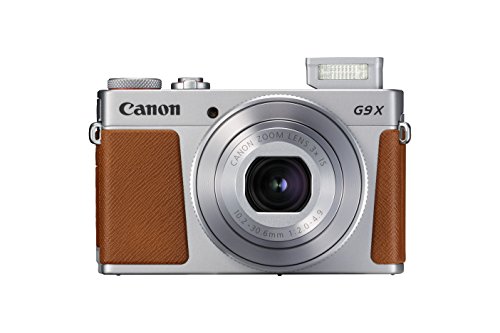
Pros: 1 inch sensor | Flip up touchscreen | Awesome image quality
Cons: No 4K video | Slippery frame
The Canon PowerShot G9 X is a great option, featuring a 20.2-megapixel sensor and a 4.20x zoom lens that gives incredible results when shooting from afar or close up.
It has amazing low light capabilities, giving you great results in the dark without having to use the flash. There are manual settings that allow users to set their own shutter speed, aperture and ISO, but the automatic options ensure you’ll get great photos even if you’re not quite sure what you’re doing.
This updated version by Canon has a faster processing speed than previous models, and a dual sensing image stabilization mechanism allowing you to take clear photos and leave the tripod at home.
Fitting right in your pocket, this camera is ideal for travel because it’s convenient to carry around and takes dreamy photos of moving and still subjects alike.
Panasonic Lumix TZ200/ZS200

Pros: Macro mode for close up | 4k video & photo mode | Long zoom with big sensor
Cons: Loses sharpness with full zoom
This is a powerful camera in an unbelievably small package, and is highly recommended for capturing all of your travel adventures..
With a 1 inch sensor complete with 20 megapixels, you’re bound to take high quality photos that are sure to wow. The 15x zoom lens allows you to capture subjects far away as well as close up, and you also have a 24mm wide-angle view.
There’s even an option to shoot in RAW format, not to mention 4K video.
This camera is especially unique because it combines a large sensor size with a long range zoom. Most cameras have one or the other, but this one gives you both.
Bridging the gap between a smartphone camera and a DSLR, this strong piece of equipment will serve you well for years to come.
Sony RX100 V
Pros: Flip screen | Quick focusing | 4K Video
Cons: Pricey | Short battery life | Weak microphone
Sony did an unbelievable job crafting this perfectly compact camera for travel.
Coming in hot with 20.9 megapixels, this camera shoots crystal clear photos and 4K video, making it awesome for shooting films. Just be aware that the built-in microphone is somewhat weak.
A viewfinder combined with the electronic touchscreen make it practical for any situation (especially those sunny days when seeing the screen is nearly impossible) and the huge sensor allows you to take crisp photos during day and night. The processing speed is quite fast so you’ll always be able to capture that quick shot.
While it does have a high price tag compared to other point-and-shoot cameras, you are getting some features that are generally only available in DSLRs. Paired with the best Sony lenses and you’ll be ready for anything.
Canon G7 X II

Pros: 1 inch senor | Flip screen | Good microphone
Cons: No 4K video | Slow to focus
Next up is another powerhouse from Canon.
With a 1 inch sensor and 20.1 megapixels, the Canon G7 X II is has a wide range of capabilities, making it a fan favorite. Photographers and vloggers alike love this point-and-shoot as it’s convenient, powerful, has a flip screen and a strong microphone.
If you’re looking to record videos of your travels, this is the camera for you!
Professional photographers love this camera because of the wide range of capabilities and the option to change the settings manually instead of being stuck on the auto mode. However, it’s also a suitable camera for novice or hobby photographers because it’s easy to use without sacrificing quality.
The photos are sharp, the speed is quick, and the zoom range will allow you to capture whatever you want at any distance, making it an awesome camera for travel.
Canon Powershot G1 X III

Pros: Incredible image quality | DSLR quality in pocket size
Cons: Expensive | Loses quality with full zoom
If you’re looking for a more advanced point-and-shoot best suited for more experienced photographers, Canon’s G1 X III is a great choice.
Not only is this camera pocket-sized but it has a sensor found in a DSLR — talk about quality! Featuring 24.2 megapixels and other DSLR level controls, this camera is expensive but worth it.
Many users have boasted giving up their DSLRs for this point-and-shoot because it has all of the same capabilities but in a smaller, more convenient package.
The autofocus is quick and the built-in flash captures a wide range. Photos on this camera turn out beautifully, and this is a great tool for advanced photographers looking to downsize.
Best Mirrorless Cameras for Travel
Mirrorless cameras are a step up from a point-and-shoot. While they’re still relatively small and compact, they have interchangeable lenses which is the main difference between these guys and point-and-shoots.
What exactly does “mirrorless” mean? Well, a mirrorless camera doesn’t have a reflex mirror optical viewfinder (which is something found in DSLRs) which means that the sensor is always exposed to light.
The main difference between a DSLR and a mirrorless camera is that the latter are smaller because of the absence of the mirror box which greatly contributes to the size of a DSLR.
Bottom line: mirrorless cameras are a good choice if you’re looking for something that’s the size of a point-and-shoot but has interchangeable lenses.
Mirrorless cameras are rapidly growing in popularity, and are a great choice if you’re looking to level up your photography game.
Sony A7 III
Pros: Full frame sensor | 4K video | Internal stabilization | Weatherproof
Cons: Expensive | No built-in flash
Often thought of as the best travel camera, the Sony A7 III is an awesome mirrorless camera with a wide range of controls.
Not only does it have a full frame sensor, but it also comes with 24 megapixels, fast focusing speeds and awesome low light capabilities. Your pictures will come out clear due to the internal stabilization mechanism, and the camera itself will stay protected thanks to the weather-sealed body.
The autofocus covers the entire frame, making sure the images come out crisp and without blur. The colors appear extremely vibrant, making this an awesome camera for shooting landscapes and colorful scenes. Plus, it performs well at nighttime and is versatile in what it can do.
Oh yeah, and did I mention 4K video?
This is truly an awesome camera for travel and beyond.
Sony A6500
Pros: Internal stabilization | Built-in Flash | Great Value
Cons: Shorter battery life | Less weatherproof
If you’re looking for a strong mirrorless camera that’s a little smaller than the A7 (and has a smaller price tag as well!), check out the Sony A6500.
Although it has a slightly smaller sensor and is more susceptible to damage from the weather, this awesome camera still has 24 megapixels and shoots 4K video. It also features a touchscreen.
However, what makes this camera so special is the in-body stabilization (IBIS).
Most cameras have some sort of stabilization mechanism, but the one in the A6500 is much more advanced than other models. Besides reducing shake from hand-held photography, the IBIS makes shooting at nighttime a breeze and produces clear photos like never before.
This is great for travelers shooting on the go, because even on uneven terrain, you’ll still get nice photos without having to worry about blur.
The processor is also much faster than previous models, and is perfect for sharp action shots. There’s very little lag and the autofocus is top of the line.
This is a great choice if you’re looking for a mirrorless travel camera at a decent price.
Fuji X-T3
Pros: Weatherproof | Advanced processor | Touchscreen and viewfinder
Cons: Tricky menu settings | No internal stabilization
Fuji is a world-renowned camera producer — and for good reason.
Fuji X-T3 is a favorite among travelers because it’s durable, lightweight, and compact. The photos and videos you take will be of the highest quality, with 26.1 megapixels and a 4K video.
It’s great for burst shooting, making it awesome if you want to capture lots of movement or sports, and the camera has an advanced processor to enhance this even further. The swift autofocus makes sure that everything in the frame is sharp, and the camera experiences very little lag.
The touchscreen tilting panel along with the viewfinder is an added bonus and makes it easy for you to keep your eyes on your subject. While the camera doesn’t have an IBIS system, Fuji makes plenty of lenses that will make sure that your shots are stable.
But the best part about this advanced piece of equipment? It’s water and dust-resistant, making it unbeatable for travel.
Olympus E-M10 Mark III
Pros: Affordable | Advanced stabilization system | 4K video | Touchscreen
Cons: Not weatherproof | Not good for low light | Lower resolution sensor
This compact camera looks as good as the photos it takes!
A huge step up from the previous model, the Olympus E-M10 Mark III has 16 megapixels and a micro 4/3 sensor, making it a great camera for the low price tag.
This camera has features like 4K video, a touchscreen, and a top of the line stabilization system that makes it ideal for shooting clear photos.
The E-M10 is super handy as it lets you pick a specific focal point for your shot instead of focusing everything (although you can do that as well, if you’d like), creating interesting photos. The menu is intuitive and easy to use, aiding the setting selection process greatly.
On your travels, having easy settings will make all the difference because you’ll spend less time fiddling with controls and more time taking pictures!
Panasonic Lumix GX80 / GX85
Pros: WiFi | Tilting touchscreen | Built-in flash | Affordable | Ultra compact | 4K video
Cons: Poor in low light
This is the camera you want if you’re looking for something small and lightweight!
With a micro 4/3 sensor and lens, it’s compact and easy to travel with. You’ll get great photos with the 16 megapixels, and always be able to keep your eyes on the prize with the tilting touchscreen and viewfinder options.
There’s also a built-in flash, WiFi capabilities and all at an awesome price point.
This camera also has phenomenal IBIS stabilization, and takes steady photos even while being handheld. The best part about the IBIS here is that it applies to the 4K video, which is something rarely found in cameras.
While it doesn’t preform well in low light, it’s still a terrific camera for travel due to the size, weight and vast controls.
Best DSLR Cameras for Travel
DSLR stands for Digital Single-Lens Reflex camera, and is a bulkier option that is best for shooting wildlife, sports and action. They’re also great for portraits and pretty much anything close up (with the right lens, of course).
These are high quality cameras that allow you to see exactly what you’re going to shoot using the optical viewfinder. Mirrorless cameras may experience a lag because the sensor has to transfer the the photo to the digital display; however, this is not the case with DSLRs.
DSLRs also focus quicker than other cameras as the autofocus technology is more advanced than what’s found in mirrorless or point-and-shoot cameras. However, it’s important to note that older lenses may focus slower than newer ones.
In addition to focusing faster, using a DSLR will give you greater lens options and a longer battery life.
The downside to shooting with a DSLR and optical view finder is that you can’t see how the exposure and other settings are going to come out until you actually take the photo.
If you’re serious about travel photography, you’re gonna want a DSLR on your adventures.
Canon EOS Rebel SL3 / 250D
Pros: Lightweight & compact | 4K video | Live view autofocus | Flip-out screen | WiFi | Affordable
Cons: Not great for advanced use
DSLRs are generally large and bulky, making them inconvenient for travel. However, the Canon EOS Rebel SL3 is compact and only slightly larger than a mirrorless camera, making it a top pick for DSLRs to take on your adventures.
With rapid autofocus and razor-sharp photos, you’re going to love taking pictures with this bad boy. The flip-out screen is touchscreen, and allows you view your photos with ease. The 4K video is flawless, and the 24.1 megapixels will give you crystal clear details on all your photos.
This camera is awesome if you plan on taking lots of photos at night as users mention that the pictures are still razor-sharp despite low lighting. The speed of the processor is also of note as it’s lightning fast with barely any lag.
The camera body is lightweight with an awesome grip, so it’s sure to stay in your hands while you traverse through new locations. This is a great DSLR, with countless compatible lenses to suit whatever adventures await you.
Canon EOS 80D
Pros: WiFi | Touchscreen | Weather sealing
Cons: Heavier | No 4K video
If you’re looking for a slight step up from Canon’s Rebel line, check out this guy. Complete with a 24.2 megapixel sensor, a moveable touchscreen, WiFi and a wide range of lenses to choose from, what’s not to love?
The Canon EOS 80D has an awesome autofocus system and an intelligent viewfinder that won’t keep you waiting while trying to snap the perfect shot. Use the touchscreen to create a focal point and be amazed at the result. Great for wildlife, portraits and landscape, your photos are sure to come out crystal clear when using this DSLR.
The body isn’t the most lightweight model, but it’s not super bulky either. The size is made to handle a variety of different lenses — even those bigger ones that may weigh a bit more.
The best part about this camera is that it has weather sealing, making it water and dust-resistant, perfect for any traveler.
So if you’re looking for a versatile DSLR that can handle whatever you throw at it, this may be the one for you.
Nikon D3500

Pros: Compact | Clear viewfinder | Low price
Cons: Fixed screen | Slower autofocus | No 4K video
This Nikon may be easy to use, but it has everything you need in a high quality DSLR. Compact, reasonably priced, and powerful, you’re sure to snap some awesome shots with this dependable camera.
The Nikon D3500 features a 24 megapixel sensor, super clear optical viewfinder and a lightweight body. With so many Nikon lenses to choose from, you’re sure to find one that suits your needs.
This is a great beginner camera if you’re just starting to dip your toes in the DSLR pool. It is simple to use, has a variety of functions, and is a good way to get going if you’ve typically only used point-and-shoots.
Plus, it’s extremely lightweight, so it makes a great travel companion.
The only downsides to this camera is that the live view autofocus isn’t as fast as other cameras and there’s no external mic port, but at this price point, it’s hard to complain.
Pentax KP

Pros: Weather sealed body | Shake reduction for clear photos | Tilting screen | WiFi
Cons: Heavy | Not too many lenses
If you’re looking for a camera that’s not a Nikon or a Canon, give Pentax a try with this solid DSLR.
The Pentax KP comes in hot with 24.3 megapixels and an ISO 819200, making it great for high quality burst shooting and taking still photos alike.
The camera’s body is weather sealed, making it great for adventures off the beaten path. It comes complete with a tilting screen and WiFi capabilities, as well.
This is a DSLR better suited to advanced photographers as it has a three-wheel control, one ISO, shutter speed and aperture respectively. The large optical viewfinder makes keeping your subject in eyesight easy, and autofocus is quick and accurate.
Finally, the tilting screen allows you to get that perfectly angled shot without shooting blindly.
The only downside is that it’s a bit heavier than other contenders and doesn’t have as many lens options as cameras from brands that dominate the market.
Best Action Cameras for Travel
Action cameras are popular among the most adventurous travelers as they allow you to capture photos and footage while engaging in high activity.
While the quality isn’t as high as a traditional camera, action cameras can capture great views, are exceptionally easy to use, and tend to also be waterproof and shockproof.
If you’re looking for a camera to hop in the ocean with or take on an ATV ride, these are the ones for you.
Akaso V50 X
Pros: 4x Zoom | Waterproof | Affordable | Touchscreen | Adjustable wide angle lens
Cons: Mobile app connection issues
If you’re looking for a budget-friendly action camera, the Akaso V50 X is a great option. Considering you can get this camera below $100, it’s considered a steal. Boasting of zoom capabilities, as well as being waterproof up to 131 feet, this action camera is perfect for those who don’t want to shell out a ton of money.
Despite the affordable price point, this action camera can hold its weight among the popular action camera brands with 4k video capabilities, electromagnetic image stabilization, as well as an intuitive touch screen.
GoPro HERO10

Pros: Durable | Waterproof | Portable | WiFi | Touchscreen | Wide angle lens
Cons: No Zoom
A GoPro is a top companion for adventurous travelers around the world, and for good reason. Their latest model, the Hero 10 is an incredible camera!
This super-compact camera is awesome for shooting action shots and videos with its wide-angle lens and sleek design. It’s waterproof and shockproof, and in all the years I’ve had mine (albeit an older model) it hasn’t obtained so much as a scratch. Talk about durable!
The downside to GoPros is that they don’t zoom and only feature a wide angle lens, so while you can properly capture your surroundings, forget about far-away shots.
Finally, GoPros are awesome because they connect to an app on your phone to not only view your photos and videos, but for control of the camera as well.
If your travels are more on the adventure and action spectrum, I can’t recommend GoPros enough.
Olympus TG-5
Pros: Extremely durable | Waterproof | Zoom lens | GPS | 4K video | RAW shooting
Cons: Low quality audio | Slow focusing | Poor stabilization
Shockproof, waterproof, and virtually indestructible, the Olympus TG-5 is an action camera that’s ready for any kind of adventure.
Made specifically for underwater use, it has many awesome features that take it above and beyond. This camera can shoot RAW photos, has 4K video and a built-in GPS so you always know where your pictures were taken.
It’s a step up from a GoPro because it has a 4x optical zoom lens which is something GoPros are lacking, so you can always get up close and personal with whatever you’re shooting.
The microscope mode is what makes this camera so special because it allows you to capture tiny details that may be missed otherwise. Switching settings underwater is easy so you’ll never miss a thing when toggling back and forth between different modes.
You will be amazed with what this camera can do, but more importantly, what it can survive!
Best Smartphone Cameras for Traveling
If you just plan to stick with your smartphone during your travels, it’s definitely worth investing in one with a solid camera. A good camera makes all the difference, because some smartphone photos turn out pixelated and are low in quality, which is a drag when revisiting memories from a trip.
Smartphone cameras are a great choice if you’re looking for the lightest weight, most portable camera possible.
After all, it’s unlikely you’ll want to take a bulky camera with you on a night out or on intense treks through rough conditions. However, you’ll have your phone with you in these situations, so investing in one with a good camera is the ultimate added benefit.
Here are our top picks for smartphones with the best cameras.

Pros: Incredible Imagery| Variety of shooting modes, Shoots in 4k
Cons: Expensive
If you’re an iPhone user, it’s highly unlikely you’ll be willing to settle for anything less than Apple. However, the best thing about Apple products is that they tend to be high quality with cameras that take beautiful photos.
The camera on the iPhone 13 Pro has so many incredible features that the image quality is hard to believe. There’s a second lens that adds an additional sensor, upping your photo game even more. You can also shoot in different modes, apply different effects, and instantly share the photos you take.
A favorite feature of the iPhone 13 Pro camera is portrait mode which takes flawless photos up close while blurring out the background. Photos taken on portrait mode look as if they were taken on a larger, more sophisticated camera, which is an awesome feature.
You can also take great panoramas, time lapses, slo-mo and videos while using this awesome device.
The iPhone 13 Pro has the best camera of all the iPhones, but it doesn’t come cheap.
Honor 7X
Pros: Dual lens | Long battery life | Multiple shooting modes
Cons: Short Lifespan
If you’re looking for a smartphone camera with the same dual lens set up as the iPhone X at a fraction of the price, check out the Honor 7X.
This phone comes complete with a 16 megapixel lens and an f/2.2 aperture to take some of the clearest shots possible. The screen is wonderfully large which means you can view all of your photos with a high resolution and do some on-the-spot editing accurately and with ease.
The focus is ultra fast, as is the processing speed, and the display is beautiful with a wide field of vision.
The camera on the Honor 7x also has a variety of shooting modes, including the fan favorite portrait mode that’s even available in selfie mode! Plus, the battery lasts for up to a day and a half, so you’ll never have to worry about losing power on the go.
Google Pixel 6

Pros: Fast autofocus | Image stabilization | Different camera modes | Long battery life
Cons: Single lens
Powerhouse Google does not disappoint when it comes to smartphones, especially the cameras that come along with them. The previous version, the Pixel 3, was regarded as having the best smartphone camera of 2018, and the Pixel 3a is another step up from that.
Still a reasonable price, the camera on the Pixel 3a has a 12.2 dual-pixel megapixel sensor with an f/1.8 aperture and 76 degree field of view. The camera has lightning-fast autofocus ,and even comes with image stabilization, so say goodbye to shaky photos!
The camera comes with different features like night sight and portrait mode, making it the perfect camera for any situation or setting. This is a huge benefit for travelers as you never know when you’ll want to snap a photo the most!
In addition to all those camera features, the screen is a high resolution and the battery life is long.
This is one of the best smartphone cameras you can find at an unbeatable price point.
Samsung Galaxy S20
Pros: Extremely slim | Water-resistant | Can change the aperture
Cons: Expensive
If you’re willing to pay the price, the Samsung Galaxy S20 is an unbelievable piece of equipment.
The main lens has a 12 megapixel sensor and allows you to shift the aperture between f/2.4 and f/1.5 which is super unique for a smartphone camera. This ability to change the aperture is awesome if you want to take a lot of photos at night.
There are two other lenses on the back of the phone which have 16 megapixels and 12 megapixels respectively. They’re there to fulfill all of your photography requirements! It also has a 40mp selfie camera!
With the different lenses, you can completely customize your shot and then immediately upload it to the web or send it off to friends and family.
The best part about this Galaxy S20 is that it’s water-resistant. This is a great feature for travelers because you can take it along on your most rugged adventures without worry about it getting damaged by water. It’s also super thin and fairly sturdy, making it one of the top picks among travelers.
Best Camera Lenses for Travel
With both mirrorless and DSLR cameras, you’re going to want to purchase some lenses to take the best shots possible. While some cameras may come with a basic starter lens, most only come with the body, making buying a lens or two an essential step in your purchase.
When picking a lens to take along on your travels, you’re going to want to consider image quality, size and weight. Because you’ll inevitably have limited space, it’s best to pick a lens that works well in a variety of situations.
Your best bet is to go with a walkaround lens, which is a lens that can do pretty much anything.
Don’t know where to start? Here’s a roundup of the best travel lenses to complete your camera purchase.
Panasonic Lumix G Leica 8-18mm F2.8-4.0
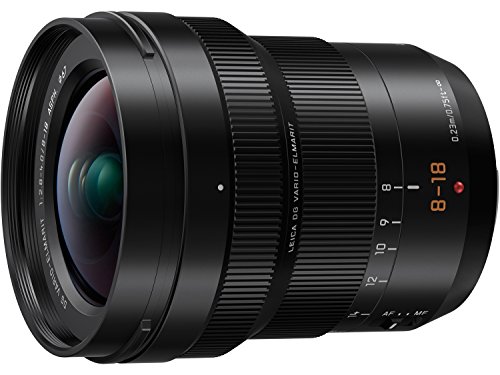
This is an awesome wide angle lens that’s lightweight and easy to travel with. You can use it in a variety of different situations and you’ll love how the photos turn out.
The downside is it doesn’t have image stabilization but because the lens is so lightweight, you should be just fine without it.
Olympus M.Zuiko Digital ED 7-14mm f/2.8

This is a great wide angle lens from Olympus that has a focal length of 12mm-28mm and a fixed aperture of f/2.8. It’s a great lens because it’s fast no matter the focal length, and dependable in a wide variety of situations.
The downside is it’s a heavier lens, but it’s also weather sealed and protected from dust, making it a good pick for travel.
Sony 18-105mm f/4 OSS G
This G series lens from Sony is high quality and suited for all of your travel needs. It has a focal length of 27mm-158mm with a fixed aperture.
It’s best for mirrorless cameras as it’s not really made for DSLRs, but it’s a great lightweight choice if you’re shooting with one!
Sony E 18-135 f/3.5-5.6 OSS
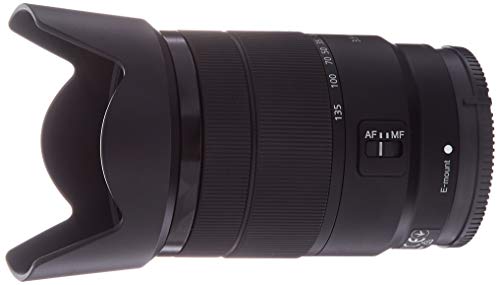
Here’s a great walkaround lens from Sony that was designed with travelers in mind , and at a decent price. It performs well no matter the focal length, and it even has an image stabilization mechanism.
Nikon 28-300mm f/3.5-5.6G VR
If you’re shooting with a Nikon, here’s an awesome walkaround lens that you can use anywhere in the world.
The aperture is quick and the images are stable, giving users high quality photos and a nice shooting experience. It takes full-frame photos, and is designed for DSLRs.
Canon EF 24-70 f/2.8L II
Canon users rejoice because here’s a high quality lens that’s perfect for walkaround shooting!
While it’s a little heavier and pricer, you’re getting what you pay for with an incredibly sharp shot and fast aperture. Shoot a variety of scenes, whether you’re looking at people, places, or things. You will not be disappointed here.
Canon Travel Bundle
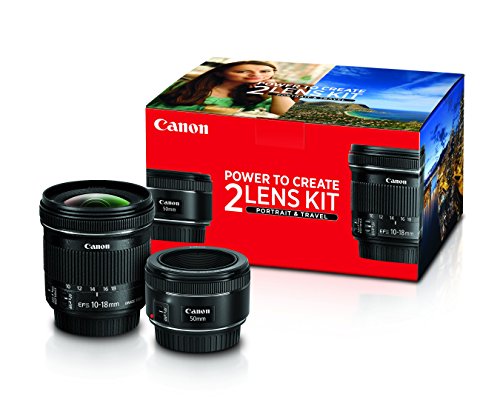
Finally, if you’re looking to get a bang for your buck and up your travel photography game, go for Canon’s travel bundle that comes with two lenses that are lightweight and designed for a variety of uses.
In this kit, you get an EF 50mm f/1.8 STM lens and an EF-S 10-18mm f/4.5-5.6 IS STM lens. Both are compact and made with your travel photography needs in mind. You’ll shoot smooth and sharp shots anywhere in the world.
Essential Travel Photography Accessories
To go hand in hand with your new camera and lens, you should consider bringing along these essential travel photography accessories that will enhance your photo taking experience.
JOBY GorillaPod
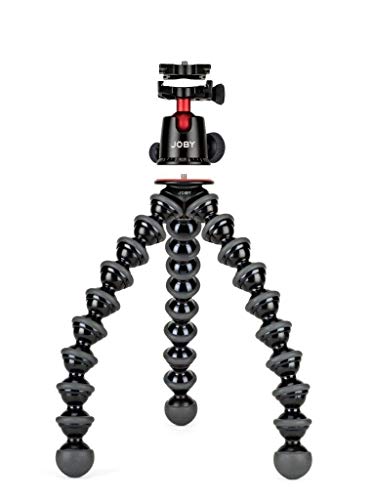
For stable photos without the weight of a tripod, bring along this GorillaPod.
This flexible, lightweight tripod can wrap around any surface and safely hold your camera in place while you snap the perfect shot.
BONFOTO Q111 Lightweight Camera Tripod
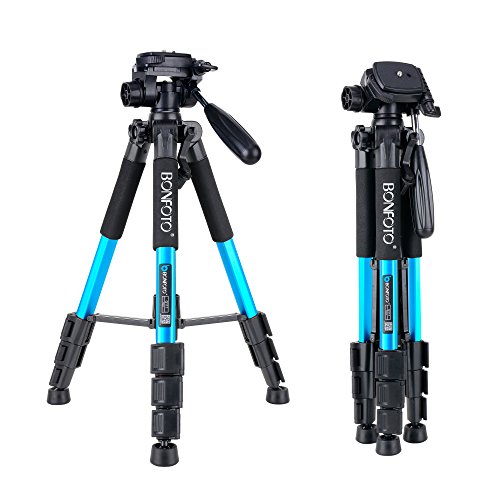
If you do want to go the traditional tripod route, here’s a great lightweight one that’s ideal for travel.
Made from aluminum, BONFOTO Q111 Lightweight Camera Tripod is not as heavy as traditional tripods and it extends to be as long and tall as you need. It’s best to use it for long exposes or time lapses so that you don’t have to keep your camera in hand and hold it steady.
TrueSHOT Camera Strap

You absolutely want to have a camera strap to wear around your neck to keep your camera secure and available for whenever the perfect shot arises.
The TrueSHOT Camera Strap is great for travel because it’s heavy duty and suitable for any activities where you’re bringing your camera along. It even has pockets on the strap to store memory cards, batteries, lens caps and more!
Thule Aspect DSLR Backpack
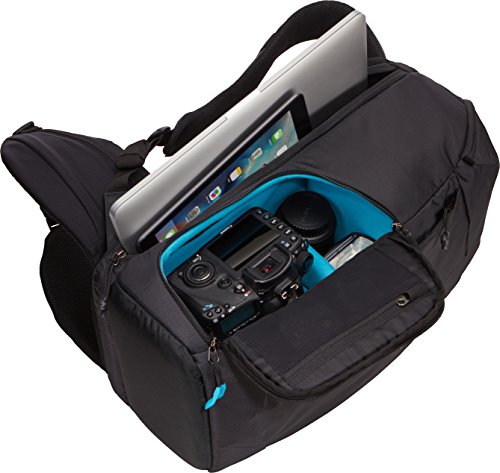
To tote all of your gear around, you may want to have a dependable camera bag to take along on your travels.
This Thule backpack comfortably fits a laptop, DSLR, and all the photography gear you need while still leaving room for other travel essentials! The padding inside will keep your equipment safe and protected from outside forces.
There are tons of pockets and compartments on the Thule, making it a top pick for camera backpacks.
Lens Pen
Keep your lenses clean with this nifty little device.
Instead of using a traditional microfiber cloth that just collects dirt and smears around dust on your lens, try out a lens pen that has a retractable brush which stays clean in between uses.
GoPro Accessory Kit
If you’re a GoPro user and in for a little adventure, don’t forget to grab a pack of GoPro accessories to use in any situation.
This huge bundle includes different mounts (chest, head, wrist, helmet and more) as well as a floatie to use in water, and carrying cases galore. You will be grateful you’ve got this as you use it time and time and again during any outdoor adventure!
Drones for Travel Photography
Finally, if you’re looking for something extra special, you may consider purchasing a drone to take unbelievable aerial footage from a bird’s eye view.
Soaring up above, drones are easily controlled from a remote with a smartphone attachment so you can see exactly what you’re filming. Here are a few awesome drones I recommend for talking along on your travels.
DJI Mavic 2 Pro
This is the ultimate drone for travel as it folds up to be super small and fits conveniently in any luggage.
The camera is super high quality, capturing sharp photos from up above. With 20 megapixels and 10-bit 4K video, this is one of the best drones on the market at the moment.
The battery life is long and the blades are much quieter than other models, leading to less disturbance. On top of all this, there are sensors in every direction to ensure the drone stays away from anything that can create damage, giving you the ultimate drone flying experience.
DJI Mavic Air
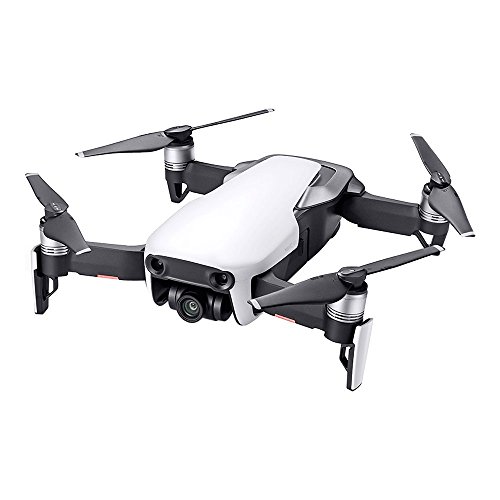
A reasonably priced model, the Mavic Air is another great drone for all your travel adventures.
Easy to fly, this drone will serve you well soaring over a wide variety of landscapes and the controller easily connects to your phone for optimal control. The Mavic Air has a 24mm lens with 4K video.
Plus, it folds up to be quite small and barely weighs anything, making it super convenient for packing.
DJI Spark
If you want a drone but are on a budget, try out the DJI Spark.
Just because it’s a budget drone doesn’t mean it lacks in quality. The DJI Spark has object avoidance, image stabilization, and takes high quality photo and video — all in a tiny package. It flies steadily and is easy to use, but you may be slightly disappointed as there’s no 4K video.
With its super small size and high quality photos and videos, this drone will serve you well on any travel adventure.
For more on drones, check out our comprehensive guide to the best travel drones!
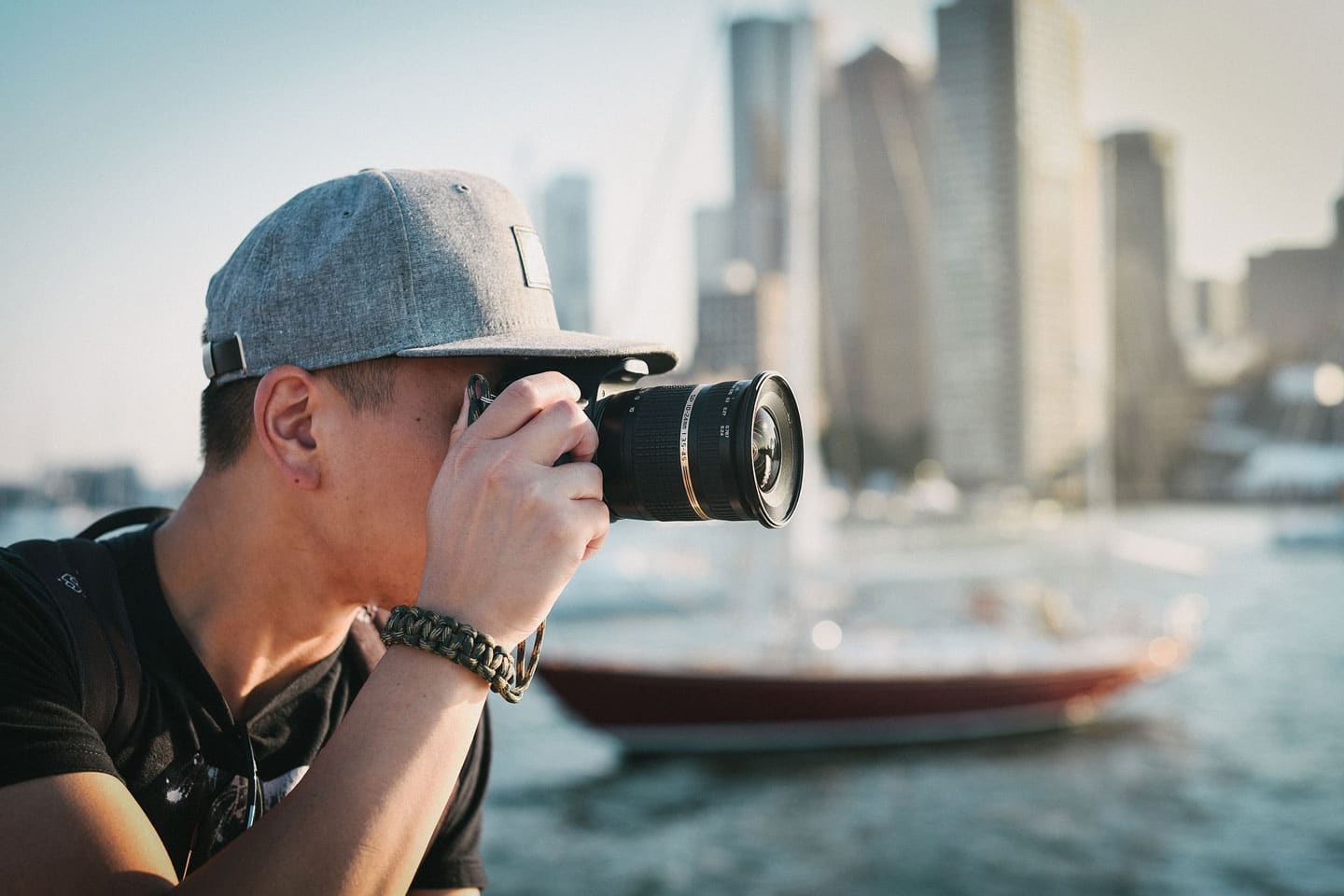
6 Factors to Consider When Buying a Travel Camera
With so many cameras out there, here are certain factors to consider when buying one specifically for travel.
Price
The first factor to consider when buying a travel camera is how much you’d like to spend.
Your budget will greatly narrow the pool of cameras to choose from. In terms of price, you can expect to pay at least $500 USD for a camera that is high quality and has all the functions you want in a good one for travel.
Different categories of cameras have different price ranges. Point-and-shoots and action cameras tend to be the least expensive, mirrorless cameras are a bit more pricey, and DSLRs are the most costly.
Size and Weight
You definitely want to take into account the size and weight of whichever camera you choose as you’ll be packing and traveling with it.
You don’t want anything that’s too big and bulky as this makes packing and pulling it out at optimal moments challenging. Go for a camera that’s lightweight and more compact so that you can take it wherever you go with ease.
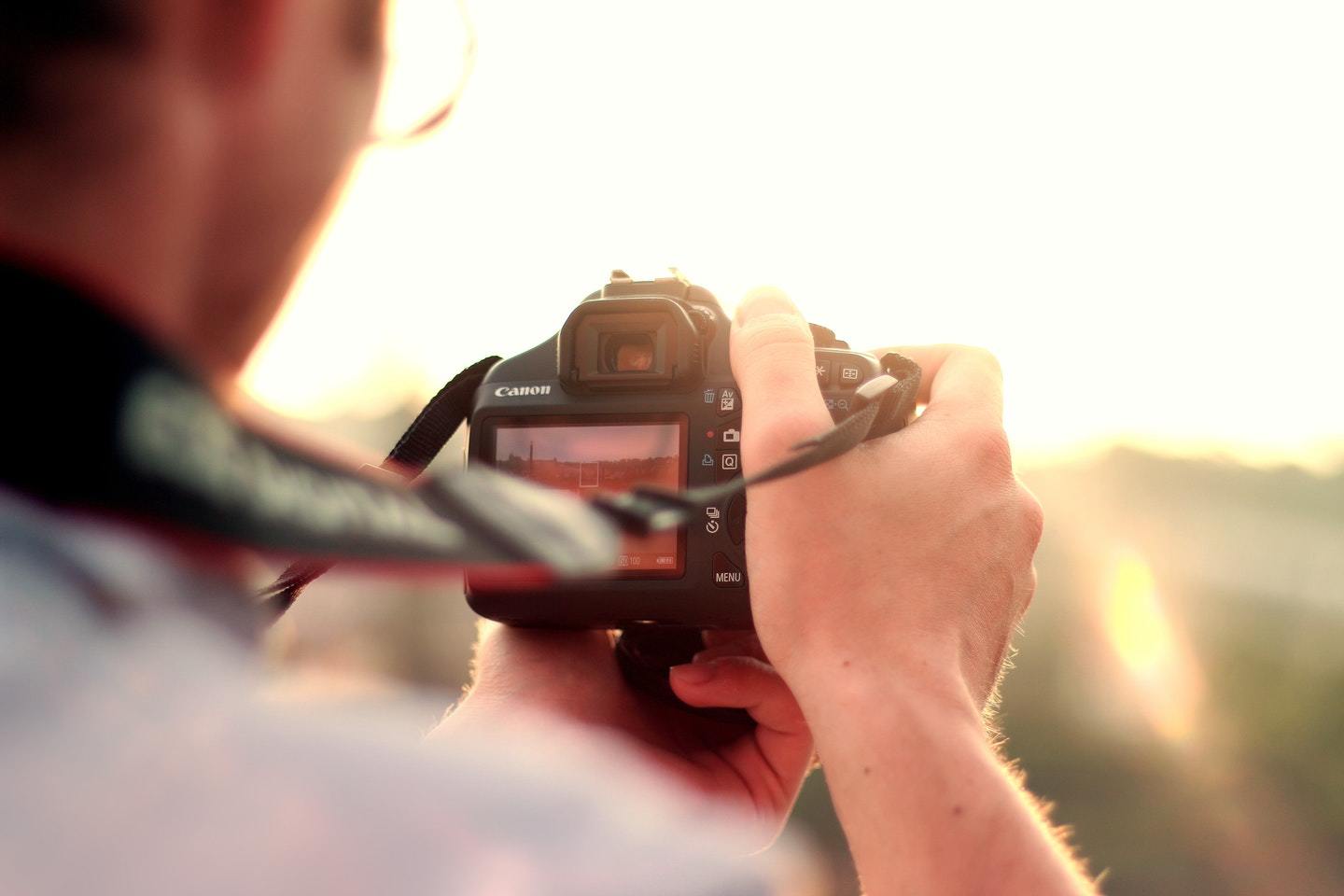
Image Quality
You certainly want a camera that takes high quality photos so that your travel pictures come out looking awesome.
Megapixels are an indicator in terms of image quality, but don’t give this too much thought. As long as you have a camera that has at least 12 megapixels you should be fine.
The more megapixels your camera has, technically the higher quality the image will be. That being said, cameras with a very high megapixels are only really necessary when you need to print out your photos on a large scale.
If you’re an advanced photographer, you’ll probably want a camera that shoots RAW photos rather than just the edited JPG format. This means that you’ll be able to edit the photo to look how you want rather than how the camera automatically edits it (which is what the JPG format is).
Most cameras with the RAW file feature allow you to shoot in JPG as well, or both JPG and RAW. I recommend shooting in both so that you have more options when it comes to choosing a final photo.
Zoom Range
Optical zoom is the basic zoom function that tells you how much larger the object you’re shooting is. For example, if the camera has 5x optical zoom, it will make your subject 5x larger when zoomed in.
Focal length is another zoom function, and is measured in mm. Focal length is found in cameras with interchangeable lenses and refers to how much the lens magnifies. The higher the focal length number, the more magnification you’re going to get.
Regardless of the camera you choose and what you plan on shooting, make sure you get one with a good amount of zoom range so that you can capture all of those far-away scenes!
Sensor Size
This is an important factor to consider if you plan on snapping photos when there’s not a lot of light — think night trekking, evening safaris and more.
Just remember: the larger the sensor, the better the low light photos will be.
To put it in perspective, smartphone cameras tend to have a small sensor, which is why photos at night don’t turn out great.
As the size of the sensor increases, so does the size of the camera. Bigger cameras, like DSLRs have larger sensors which allows them to capture photos in a wide variety of lighting. However, in a DSLR, the sensor is measured as ISO.
Interchangeable Lens
One last factor to consider when choosing a travel camera is whether you’d like one that allows you to change out the lens, or whether you’re fine with the single lens that camera comes with.
Interchangeable lenses are an awesome feature because they allow you to manually control most of the settings on the camera, as well as swap out specific lenses for specific scenes. When you don’t have an interchangeable lens, you’re stuck with what you’ve got — which isn’t an issue if what you have is good for what you need it for.
Cameras with interchangeable lenses tend to be larger and more bulky, while the alternative is generally smaller (think point-and-shoot, or action cameras). This is something to keep in mind when examining different models.
What to Look for When Choosing a Travel Camera
With so many options available, choosing a travel camera isn’t the easiest task in the world.
Here are some things you should look for when picking one that’s best for you.

Durability
When choosing a camera, you definitely want something that’s durable because you never know what’s going to happen when you’re on the road.
The best bet is to pick a camera that’s shockproof so that it doesn’t shatter if it gets knocked around or dropped.
In addition to this, look for one that’s weather-resistant. This means it can handle a some raindrops and other weather that may ruin a camera that isn’t resistant.
Packability
For most travelers, you want to choose a camera that you can pack easily.
Similar to size and weight, pick a camera that’s compact and can fit in any of your bags. This will make all the difference, as the best travel cameras as the best to pack.
Other Features to Consider
There are tons of added benefits to look for when choosing a travel camera that depend on your desires, need and budget.
I’d recommend going for a camera with a stabilization system so that your photos come out clear when you’re moving. This is especially handy if you plan on shooting a lot of video with your camera.
Most cameras these days come with video capabilities but if this is the main purpose, you should go for a camera that has a high amount of frames per second for smooth playback, as well as a high quality microphone for capturing sound.
You may also want to consider getting a camera with a pivoting screen for the ultimate viewing experience and best selfies ever! Not to mention this is a prime feature for vlogging!
One last added benefit to think about when choosing a travel camera is GPS and WiFi capabilities. A camera with a GPS will tell you the location of your photos, which is an awesome tool for when you forget where you shot something.
WiFi connection on a camera allows you to immediately upload photos to your phone or computer for editing and posting to social media. This is a super useful feature for all you Insta lovers!
What Kind of Travel Photographer Are You?
Defining what kind of photographer you are will aid you in narrowing down the vast selection of cameras on the market.
If you’re looking to snap some quick pictures without giving much thought to settings and adjustments, you may want to go with a simple point-and-shoot or a mirrorless camera.
If you’re more of an adventurous type and looking to shoot lots of photos and videos while doing different activities, check out action cameras.
Lastly, if you’re an advanced photographer looking to level up your travel equipment, choose a more technical camera so that you can get that perfect shot you’ve been dreaming of.
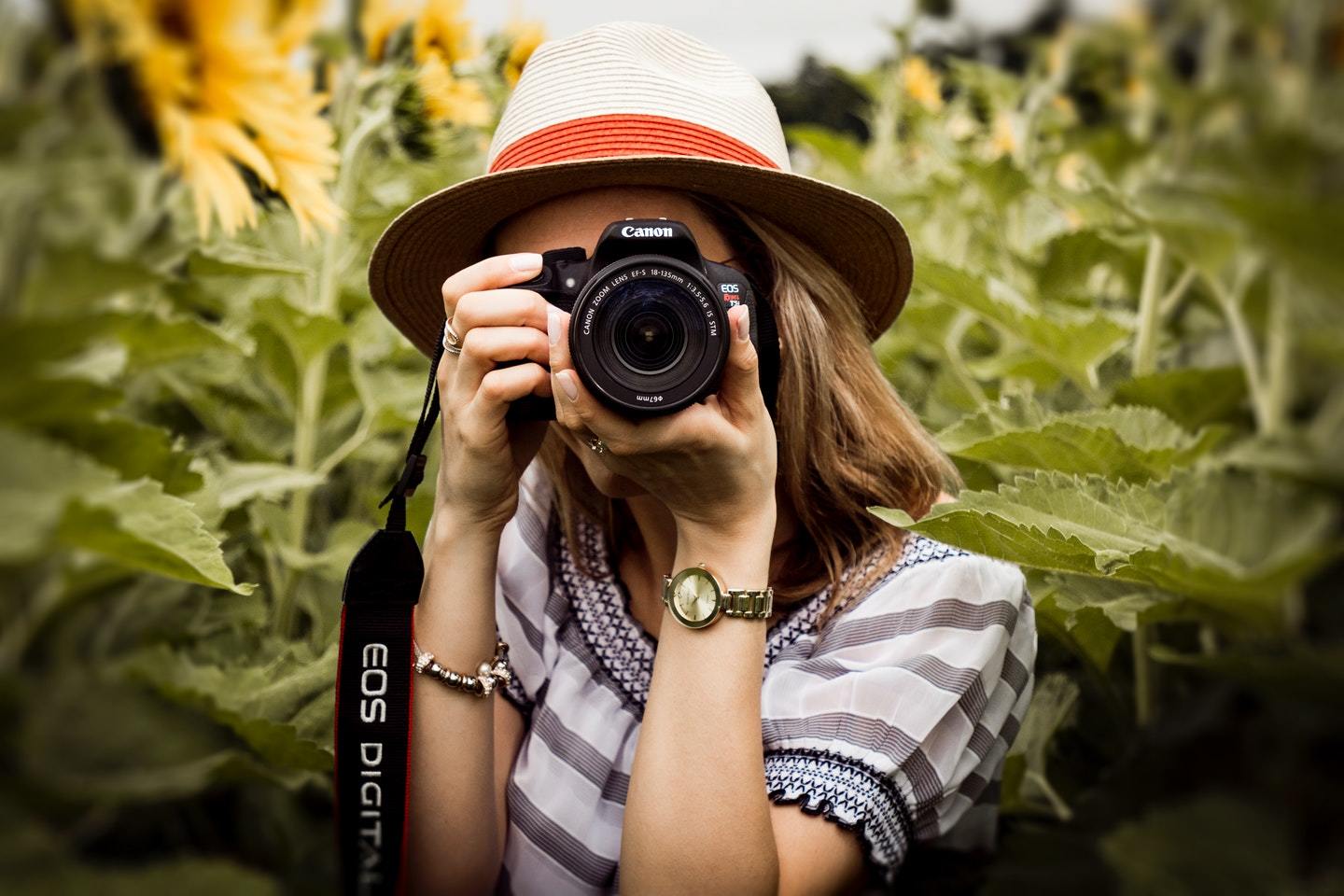
So there you have it! Whether you’re off to Africa to capture the beauty of an exotic safari, surfing the epic waves in Costa Rica, or exploring history and culture in Europe, being able to document your adventures is one of the best things about travel.
Looking back and seeing all the fantastic shots and videos that you’ve captured along the way is one of the best ways to relive your travels.
If you want to improve your eye for detail, check out this article on travel photography which has loads of great tips on how to take better photos.
And once you’ve got your brand new travel camera, you might need a camera bag for it! We’ve got you covered with our guide to the best camera bags.
Getting ready for your next trip? Check out these guides
Inspired? Pin it!
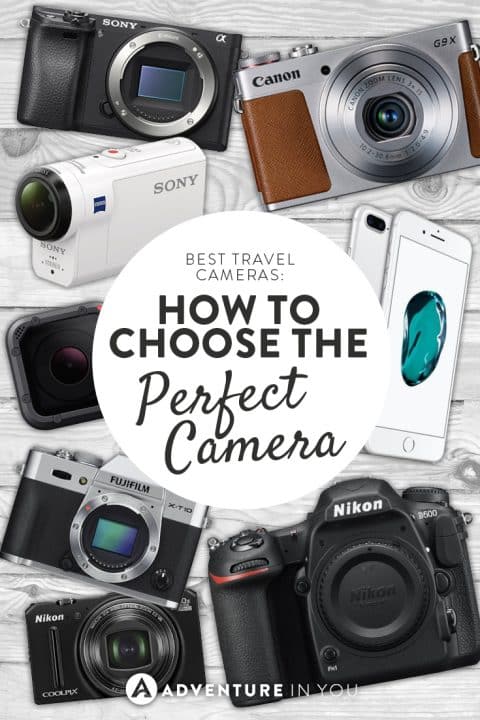
This is great! I stumbled accross this article clicking through the Southeast Asia Packing Guide – and I was like “OH SNAP! I need a new camera.” This has definitely helped me narrow it down. Thanks for making my research a little bit more easier. Cheers to more adventures!
@christinevineski:disqus Yay! No problem-hope it makes things easier. Happy trails x